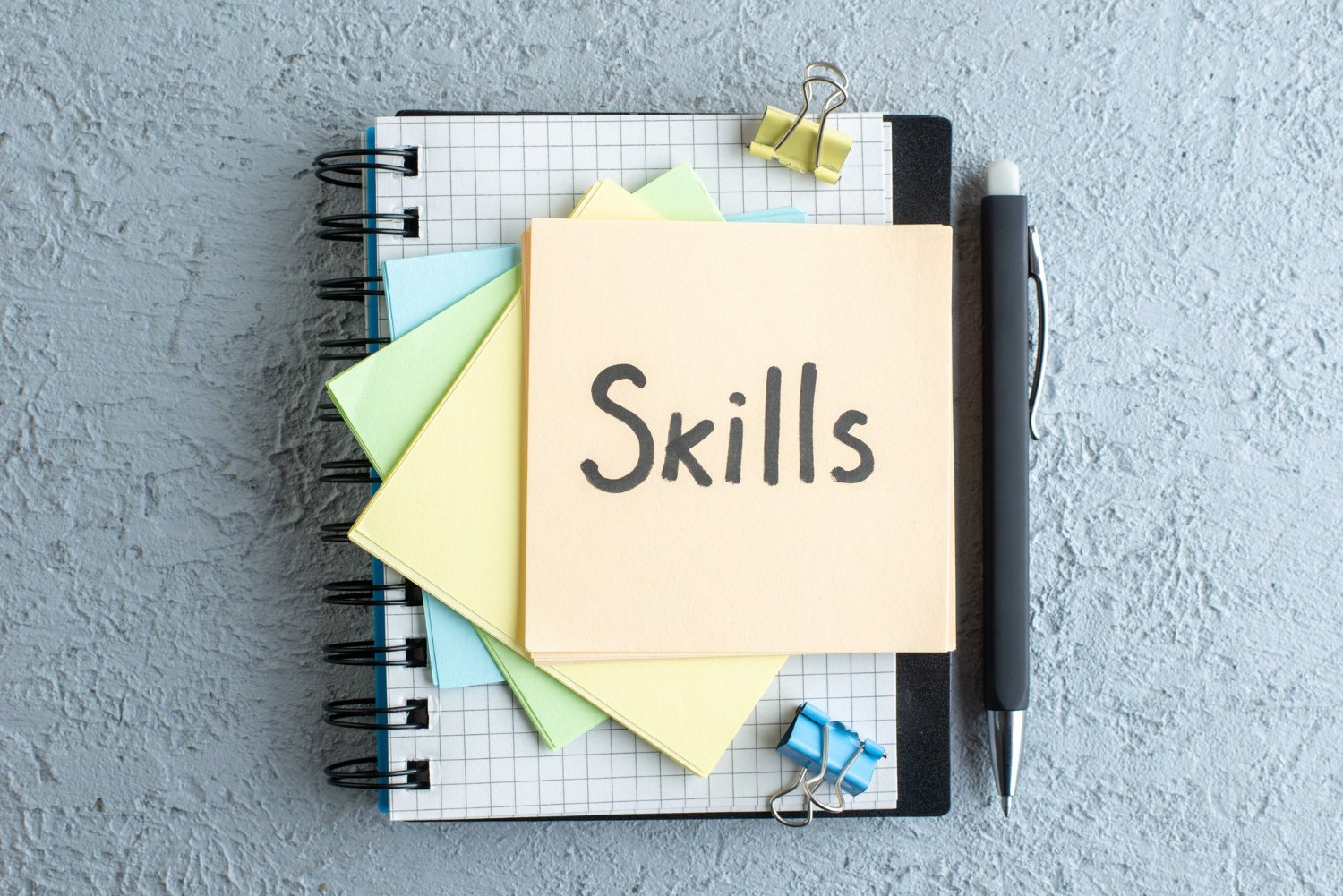Being a data scientist can be intellectually demanding, analytically rewarding, and place you at the forefront of new technological developments. Data scientists are becoming more common and in demand as big data becomes increasingly important in how businesses make decisions. Here’s a closer look at what they are, what they do, and how to become one.
What is the work of a data scientist?
Data scientists decide what questions their team should be asking and then work out how to use data to respond to those questions. They frequently create predictive models for forecasting and theorizing.
On a daily basis, a data scientist might carry out the following tasks:
- To gain insights, look for patterns and trends in datasets.
- Create data models and algorithms to predict outcomes.
- Employ machine learning strategies to enhance the calibre of data or product offerings.
- Share advice with other teams and senior personnel.
- Use data analytic tools like Python, R, SAS, or SQL.
- Follow developments in the field of data science.
What distinguishes a data analyst from a data scientist?
Finding trends or patterns in data to show new ways for firms to make better operational decisions can make the work of data analysts and data scientists appear to be identical. Data scientists, on the other hand, are generally regarded as having more authority and being more senior than data analysts.
Data scientists are frequently expected to develop their own inquiries into the data, whereas data analysts may assist groups working toward predetermined goals. A data scientist may spend more time building models, leveraging machine learning, or deploying sophisticated programming in order to collect and analyse data.
Required Qualifications and Eligibility
You need to have excellent analytical and mathematical skills if you want to become a data scientist. Complex data sets should be easy for you to comprehend and use. You should also be able to use statistical software programs and be knowledgeable about programming languages like Python or R. Additionally, most data scientists hold a qualification from an approved program.
Pre-requisites or Prior experience
A very solid foundation in computer science and mathematics is typically necessary for becoming a data scientist, as is previous experience working with enormous volumes of data. Additionally, having knowledge in statistical modelling and machine learning is frequently beneficial.
Although there isn’t a single way to become a data scientist, having the following qualifications or experiences can increase your chances of success:
- Because processing a lot of data on a daily basis is a requirement of the job of a data scientist, it is crucial to have a strong foundation in math and computer science. You must consequently have a strong background in both computer science and mathematics. The use of statistical methods and algorithms should come naturally to you.
- They should have experience working with enormous data sets. Data scientists must be able to manipulate and analyze huge data collections. It’s essential to have some past experience working with enormous data sets as a consequence before becoming a data scientist.
- Expertise in statistical modelling and machine learning. Data scientists use these two effective methods to get conclusions from data. Therefore, expertise in these techniques is required for everyone who wishes to work as a data scientist.
- Strong communication and visualization skills are essential for data scientists since they must be able to clearly communicate their conclusions to others. So, excellent communication and visualization skills are essential for anyone interested in a career as a data scientist.
- There should be a desire to learn. Because data science is a discipline that is continually changing, data scientists need to be eager to keep up with the latest approaches and tools. As a result, anyone interested in becoming a data scientist must have the willingness to learn. Enrolling in a premier data science education program is among the finest ways to learn how to become a data scientist or to sharpen your existing skills.
Work with Data Science
Did you realise that the media services company Netflix makes substantial use of data science? The business tracks metrics for user retention and engagement, such as:
- When you stop, go back in time, or fast-forward
- When and why you leave content;
- When and where you’re watching from;
- Your browsing and scrolling habits;
- What device you use to watch;
- What day of the week and what time of day you watch content.
More than 120 million people use Netflix globally. Netflix use cutting-edge data science metrics to process all of that data. Because of this, it can propose better movies and TV series to its customers and produce better content specifically for them. Data science and big data were used to create the popular Netflix series House of Cards. Another drama set in the White House, West Wing, also provided Netflix with user information. The corporation took into account where viewers stopped watching the show and where they fast-forwarded. Netflix was able to produce what it thought would be the most captivating show possible by analysing this data.
Let’s now examine some key data scientist skills that a person should have.
A Data Scientist Needs These 7 Skills.
You’ll need to be an expert in the following areas to become a data scientist:
Skill 1: Learn how to use technologies like Oracle® Database, MySQL®, Microsoft® SQL Server, and Teradata® to store and analyse data. Skill 1: Become familiar with databases.
Skill 2: Learn statistical analysis, probability, and algebra. The study and development of techniques for gathering, processing, interpreting, and presenting empirical data are under the purview of statistics, a branch of natural science. The likelihood of an event happening is gauged by probability.
Mathematical analysis is the branch of mathematics dealing with limits and related theories, such as differentiation, integration, measure, infinite series, and analytic functions.
Skill 3: Become proficient in at least one programming language. When conducting data analytics, programming languages like R, Python, and SAS are crucial.
Regression, association, and clustering are just a few of the Machine Learning techniques for Data Analytics supported by R, a free software environment for statistical computing and graphics.
An open-source general-purpose programming language is called Python. In data science, Python libraries like NumPy and SciPy are employed.
SAS can mine, modify, organise, and retrieve data from a number of sources and also analyse the data statistically.
Skill 4: Acquire an understanding of data wrangling, which entails organizing, modifying, and cleaning up data. R, Python, Flume, and Scoop are well-liked tools for manipulating data.
Skill 5: Learn the fundamentals of machine learning. enabling systems to automatically learn from their experiences and get better without explicit programming. Regressions, Naive Bayes, SVM, K Means Clustering, KNN, and Decision Tree algorithms are just a handful of the many algorithms that can be used to achieve machine learning.
Skill 6: Leveraging Big Data techniques, like as Apache Spark, Hadoop, Talend, and Tableau, to handle massive and complicated data sets that cannot be handled by conventional data processing applications.
Skill 7: Become more adept at visualizing outcomes. By combining several data sets and producing a visual representation of the findings using diagrams, charts, and graphs, data visualization.
Read Now: The Most Important Interpersonal Skills You Need To Become A Data Scientist
Getting started as a data scientist
A formal education is typically necessary to become a data scientist. Here are some actions to think about.
1. Get a degree in data science.
It’s not always necessary, but most employers like to see proof that you have the education necessary to handle a data science position. Having said that, a related bachelor’s degree can undoubtedly be useful; to advance in the industry, consider studying data science, statistics, or computer science.
2. Hone pertinent skills.
Consider enrolling in an online course or a suitable bootcamp if you feel you could improve some of your hard data abilities. These are some of the abilities you should possess.
Programming languages: Data scientists can anticipate utilising them to sort through, examine, and handle massive amounts of data. Popular programming languages for data science include:
- Python
- R
- SQL
- SAS
Data visualisation: An essential skill for a data scientist is the ability to design graphs and charts. You should be ready to complete the task by being familiar with the following tools:
- Tableau
- PowerBI
- Excel
Machine learning: Using machine learning and deep learning in your work as a data scientist will enable you to continuously improve the quality of the information you collect and perhaps even forecast the results of upcoming datasets. You can start with the fundamentals with a machine learning training.
Big data: Some employers would want to know that you have experience navigating big data. Hadoop and Apache Spark are a couple of the software frameworks used to process large amounts of data.
Communication: Even the most talented data scientists will be powerless to bring about change if they are unable to effectively convey their results. Data scientists frequently seek someone with the ability to communicate concepts and findings both orally and in writing.
Also Read: What Are Some Essential Tools And Technologies For Data Science?
3. Take a position in entry-level data analytics.
Despite the fact that there are many ways to become a data scientist, an excellent place to start is by working in a relevant entry-level position. Consider careers as a data analyst, business intelligence analyst, statistician, or data engineer, or in a similar job. From there, as your knowledge and abilities grow, you could eventually work your way up to becoming a scientist.
4. Become interview-ready in data science.
Having worked with data analytics for a few years, you might feel prepared to transition to data science. Prepare responses to the interview’s likely questions if you’ve landed one.
You may come across both technical and behavioural questions because data scientist employment can be very technical. Prepare yourself by anticipating both and practising your response out loud. In an interview, it might assist to appear confident and competent by having examples from your prior employment or academic experiences.
Data Science – General Interview Questions
1. What unstructured data taxonomy would you create to identify the most significant customer trends?
The simplest method to respond to this is to suggest that it is a good idea to speak with the business owner and understand their goals before categorising the data. Following this, it is typically advised to take an iterative approach, collecting new samples of eskişehir escortdata and adjusting the model as appropriate. This might be achieved by gathering input from the stakeholders in the company and assessing the model’s correctness. This ensures that your model is producing valuable results and developing over time.
2. Which would you prefer for text analytics, Python or R?
Python is the ideal option since it features the Pandas package, which offers simple data structures and high-performance data analysis capabilities.
3. What method is used to forecast categorical reactions?
In mining, the classification approach is frequently used to categorise data sets.
4. What are Recommender Systems, exactly?
a category of information filtering systems designed to forecast the preferences or ratings that a user would assign to a given product. Many different media, including movies, news, research articles, items, social tags, music, etc., use recommender systems.
5. Describe the power analysis.
A method of experimental design used to evaluate the impact of a particular sample size.
6. Why is collaborative filtering important?
The filtering method utilised by the majority of recommender systems to discover patterns or information using cooperating viewpoints, different data sources, and multiple agents.
7. How does machine learning work?
Giving the data and equation to the machine is the simplest approach to respond to this inquiry. Request that the computer analyse the data and determine the values of the coefficients in an equation.
We provide the data for the variables x and y in the linear regression, for instance, and the computer infers the values of m and c from the data.
8. How do you deal with missing values when performing analysis?
The extent of the missing values is calculated after the missing value variables have been located. If any patterns appear, the analyst must pay close attention to them because they could provide fascinating and beneficial business insights. If no trends are discovered, it is feasible to completely disregard the missing numbers or to impute them based on mean or median values. There are numerous considerations to make:
Prior to providing an answer, comprehend the problem statement and the data. a default value that can be mean, minimum, or maximum. It’s crucial to dig into the data.
The default value is set if the variable is categorical. There is a default value set to the missing value.
If you have a distribution of data, give the mean value for a normal distribution.
Another crucial question to think about is how we should even handle missing values? You can respond that you would drop the variable if 80% of its values are missing rather than processing the missing values.
9. How should anomalous values be handled?
Any graphical analysis technique, even univariate, can be used to detect outlier values. If there are only a few outlier values, they can all be evaluated individually, but if there are enough, the values can be replaced with either the 99th or the 1st percentile values. Not every extreme value is an outlier value. The most typical methods for handling outlier values are:
- To adjust the value and bring it into the acceptable range
- Just removing the value
10. What aims does A/B testing pursue?
A randomised experiment with the two variables A and B is being tested statistically. A/B testing aims to find any web page improvements that will maximise or improve the outcome of an interest. Finding the click through rate for a banner advertisement could serve as an illustration of this.
11. Why is data cleaning crucial for analysis?
It takes time to combine data from diverse sources into a format that data scientists and analysts can use. This process is known as data cleaning. This is because the amount of data that needs to be cleaned grows along with the number of data sources as a result of the volume of data generated by each source. Data cleaning is an essential phase in the analytical process because it might consume up to 80% of the time.
12. Understand the differences between univariate, bivariate, and multivariate analysis.
These statistical analysis methods for descriptive data can be distinguished according to the number of variables used at a particular time. Univariate analysis, for instance, can be used to describe pie charts that show sales by territory with only one variable.
Bivariate analysis is used when two variables are being compared over time, like in a scatterplot, in an effort to understand their differences. Bivariate analysis is an example that can be used to illustrate the volume of sales and spending.
Multivariate analysis is a type of analysis that looks at more than two factors to discover how they affect the results.
13. What do you mean by the word “Normal Distribution”?
Data is typically dispersed in various ways, with a bias to the left or to the right, or it can all be mixed up. However, there is a chance that data will be distributed normally, or in the shape of a bell curve, around a central value with no bias to the left or right. The distribution of the random variables takes the shape of a symmetrical bell curve.
So we hope these answers help you in your interview. We are sure that you will ace it! Before going into any interview it is better if the base of the subject is absolutely clear, this will help you answer any question that the interviewer throws at you. If you want to brush up on your degree in Data Science or you have taken a quick little detour in your career path to Data Science, I would suggest you do a certification course online to add extra weightage to your candidature. A great start is this live course by Eduonix with leading industry experts. It is great even if you are working a 9to5 because the classes are only on weekends and the duration of the course is just 6 months. All the best!



